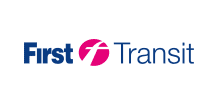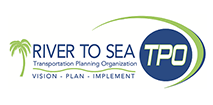Quick Navigation
Votran Fare Policy
I. Purpose
 The purpose of this Fare Policy is to establish guidelines for setting and/or restructuring public transit fares for Votran. Votran staff will utilize this policy to monitor fare collection and to make future decisions about adjusting fares. The information outlined in this policy includes:
The purpose of this Fare Policy is to establish guidelines for setting and/or restructuring public transit fares for Votran. Votran staff will utilize this policy to monitor fare collection and to make future decisions about adjusting fares. The information outlined in this policy includes:
- Fare Policy Goals: describing the overall intent of this policy;
- Fare Payment: including the types of fare media and passes that will be used;
- Fare Structure: establishing full fares and discounts for various services and ridership groups;
- Fare Box Return: determines the portion of operating costs that will be supported by users of the system;
- Public Notice and Solicitation of Comment: outlining the procedures that will be used to ensure adequate public input is provided to support decisions regarding fares.
A relationship exists between the amount of government support provided for operating a public transit system and the amount of revenue collected from the actual users of the system. The relationship of subsidy verses user fee varies in each community and is based on policy decisions made by the local governing board. This relationship is measured by comparing the revenue collected from the fare box relative to the operating expenditures of the system and is known as the fare recovery or fare return rate. Fare recovery is influenced by three main factors:
- Fare levels – The fare levels or structure influence the average fare collected per passenger and, in turn, the overall fare revenue collected. By increasing the fares (or reducing the discounts) set for each of the rider categories, fare revenue can be increased. Similarly, reductions in fares will result in a net loss of revenues. Changes in the fare structure also impact riders, with increased fares reducing ridership and reduced fares increasing ridership. Given this, fare adjustments should be made with consideration to transit customers affected.
- Productivity – The productivity of transit service is typically measured in terms of ridership per mile or hour of service. Transit systems like Votran typically attempt to balance the obligation to maximize route productivity with service policies aimed at developing new markets, serving remote communities or accommodating disadvantaged populations. Decisions regarding route productivity should be made with consideration to social needs of the community and the transit customers affected.
- Efficiency – Operational costs (fuel, labor, scheduling) are partly within control of Votran and partly a result of prevailing economic conditions. Cost efficiencies are achieved through careful budgeting, monitoring and controlling of expenditures. Cost efficiencies can be measured by operating costs per hour.
The goal of this Fare Policy is to identify a prudent balance between the various factors influencing public transit. The policy is also intended to support Votran’s mission to identify and safely meet the mobility needs of Volusia County with a courteous, dependable and environmentally sound commitment to quality service.
A. Fare Policy Objectives
Votran has established the following Fare Policy Objectives that are considered necessary for achieving the Fare Policy Goal. The objectives are classified as those that focus on consumer issues and those that support business related matters. The nature of these objectives reflects the desire to develop a Fare Structure that balances affordability for our customers with the need to generate sufficient fare revenue to help maintain and expand transit operations.
-
Customer/Community Related Objectives
The following three objectives directly support Votran’s mission of operating high quality public transportation service. When a fare increase or restructuring is proposed, all fare strategies considered for achieving these three objectives should be carefully weighed in relation to each other, as some possible strategies may achieve one objective at the expense of another. Votran must strive to meet all of these objectives.
a. Increase Utilization of Public Transportation
As a mobility manager, Votran exists to provide transportation solutions that meet the mobility needs of the public. Our success in this regard, is somewhat reflected through increases in ridership. Increased use of public transit also supports the broad social efforts of improving economic competitiveness, ensuring a reasonable quality of life for residents, reducing traffic congestion and decreasing air pollution. It is, therefore, important to adopt fare strategies that will encourage ridership by making public transit more attractive and convenient to use.
b. Establish Equitable Support from Local Interests
Volusia County realizes the benefits of providing accessible transportation options to it’s citizens. To ensure a level of equity, fares must take into account the needs of various populations of users. To this extent, a fare structure should be established that supports, encourages and enables travel choices for our most needy citizens. In addition, Votran has an obligation to be responsible to the tax payers of Volusia County that help fund the system. Equity between users and non-users that help support the system must be considered when determining fare policies.
c. Enhance Mobility & Access
The fare payment system should enhance the ability of riders to access the system and move through it with ease. To do so, the fare structure should be easy to understand. It should also provide adequate choices for customers to select the payment option that suits their travel needs.
-
Financial & Administrative Objectives
All fare strategies under consideration must also meet the following three financial and administrative objectives to ensure the continued operation of Votran services.
a. Maintain/Increase Fare Revenue Stream
Fare revenue is a critical component of the operating budget. Any increase or restructuring of fares should ensure that the total fare revenue stream is maintained at an appropriate level to meet the economic needs of the system.
b. Increase the Efficiency of Fare Revenue Collection
To improve efficiencies, a fare collection system should reduce opportunities for fare abuse, minimize the costs associated with fare collection and reduce the associated administrative costs. Votran can accomplish this by taking advantage of developments in fare collection technologies.
b. Streamline Fare Collection Process
A process should be established that minimizes the fare categories to eliminate confusion between the customers and Votran staff. In addition, fare collection should allow drivers to track and regulate inequities and expedite the boarding process.
Based on the existing equipment available on Votran vehicles, the following fare payment options will be available for use on the fixed route and paratransit system:
- Magnetic strip cards offering multi-ride options will be made available for purchase at authorized outlets. Day passes will be issued from the fare box equipment located on-board the fixed route vehicles as well.
- Single-boarding tokens for the fixed route system as well as the Votran Gold paratransit system will be available for advance purchase at authorized outlets.
- Cash fare payment will be accepted on-board fixed route and paratransit vehicles.
- Miscellaneous coupons and passes may also be introduced periodically as part of a special promotion or service. These will generally be specially printed fare passes associated with a specific event and will only be accepted during a limited time span.
It is recognized that Votran primarily serves a transit dependent population within Volusia County. The fare prices are developed with sensitivity to the needs of the transit ridership and with particular consideration of specific subgroups. The following fare types will be used to encourage ridership:
- Fixed Route Full Fare: A full fare price will be established for adult passengers boarding a fixed route vehicle.
- Fixed Route Reduced Fare: Reduced fares will be approximately 50% of the full fare option for fixed route riders. Reduced fares will be offered for seniors, youths, persons with a disability and Medicare card holders. Reduced fare options will be made available for full fare as well as multi-ride passes. Reduced fare options apply to fixed route service only.
- Free Service: Votran will allow fare free boarding on the fixed route service for children under age 7 as long as they are accompanied by a fare paying customer.
- Votran Gold: Votran Gold Service fares will be set at two times the full fare price as permitted by law. The Medicaid fare will be set at the maximum allowable fare established by the State of Florida.
- Multi-Ride Passes: multi-ride passes will be established for time periods that offer a variety of options for Votran customers. The price of each pass will be set at a level that offers an average fare value to the customer over the full fare. At a minimum, Votran will offer an all day pass and a 31-day pass.
- Promotional Fares: Votran has the option to offer deeply discounted fares or free service to promote or celebrate special occasions. The intent of these events is to encourage new riders, reward existing riders and to promote or recognize specific services. Promotional fare programs should be limited so that forgone revenue does not exceed 5% of the overall fare box return.
- Transfers: Votran will not issue transfers for the fixed route system. A fare or pass will be required for each boarding.
- Emergency Conditions Fares: Under special emergency conditions and at the direction of executive management VOTRAN may suspend fares altogether to address the emergency evacuation and/or movement of residents and visitors of Volusia County as well as in supporting regional emergency needs. Under these conditions fare box return calculations will segregate operational costs related to emergency conditions.
The predominant funding source used to support public transit operations in Volusia County comes from local government. A smaller portion comes from user fees in the forms of fares. Fare box return, which is the fare box revenue collected/operating expenditures, is influenced by several factors including the overall ridership on the system and the fare structure as outlined in the previous section. To ensure consistent decision-making is applied over time, Votran will:
- Monitor the overall fare box return annually and present this information for during the budget development and review process for Volusia County.
- Monitor efficiency of the operations.
- Establish route productivity goals such as passengers per hour and passengers per local funding dollar for the route, and will monitor the service to ensure these goals are met.
- Target the overall fare box return rate to approximately 20% for the overall fixed route system. When the rate drops below this level, route level analysis will be performed and areas of potential improvement will be identified for possible corrective action. In addition, operating efficiencies will be assessed to determine areas of potential deficiency.
- When the overall fare box return drops to 16% or below, Votran will initiate discussions to review the fare structure and adjust fares.
The Volusia County Council recognizes the value of setting a threshold for fare recovery. However, the Council also recognizes that a base recovery standard that is set too high may limit the ability to introduce new services. Given this balance of system performance and policy oriented decisions, the Council reserves the option for flexibility in responding to actual market conditions, community needs, and service when the fare box returns are reported.
A comprehensive public outreach effort is essential to ensure that the decisions being made about transit fares reflect the needs and desires of the community. A well rounded public involvement effort consists of notifying the public as well as soliciting feedback regarding the proposed changes. Typically, Votran utilizes the Volusia County Metropolitan Planning Organizations Public Involvement Plan to address public outreach efforts. In addition, Votran will include the following activities when a determination is made to institute a fare change:
a. Public Notice Procedures: At a minimum, Votran will place legal advertisements in local newspapers to announce the proposed fare changes and describe how the public may provide comment. Votran will also prepare notices in the form of press releases and provide written notices on-board buses. Other efforts may include posting notices on the public display boards at the Daytona Transfer Plaza and Intermodal Transit Facility; posting information on the Votran web site; notifying agency and business partners directly via e-mail or facsimile; and participating in interviews with local newspaper, radio, or television programs to reach additional audiences.
b. Solicitation of Public Comment Practices: To ensure public comment is considered, Votran will schedule public meetings to gather input during the development of a fare change proposal. A formal public hearing of the County Council will also be scheduled during a regularly scheduled Council meeting. Additional efforts may include placing comment forms on-board buses and posting comment forms on the Votran website. Votran staff will document all comments and suggestions submitted during this period.
c. Implementation: As a part of the process, Votran will also develop an implementation plan for proposed fare changes. The plan will outline ongoing public outreach and education needed to ensure a smooth transition.
Within the context of this policy, the following definitions apply:
- Youth: Any person between the ages of 7 (seven) and 18 (eighteen) years.
- Fixed Route: A bus route designed to operate using a predetermined path and time schedule.
- Paratransit Service: Door-to-door service offered to disabled and transportation disadvantaged persons that are unable to access fixed route service.
- Senior: Any person age 65 or older.
- Disabled: Any person with an documented disability as classified under the Americans with Disabilities Act (ADA).
- Transportation Disadvantaged: Any person qualifying as disadvantaged according to the Florida State TD criteria.



